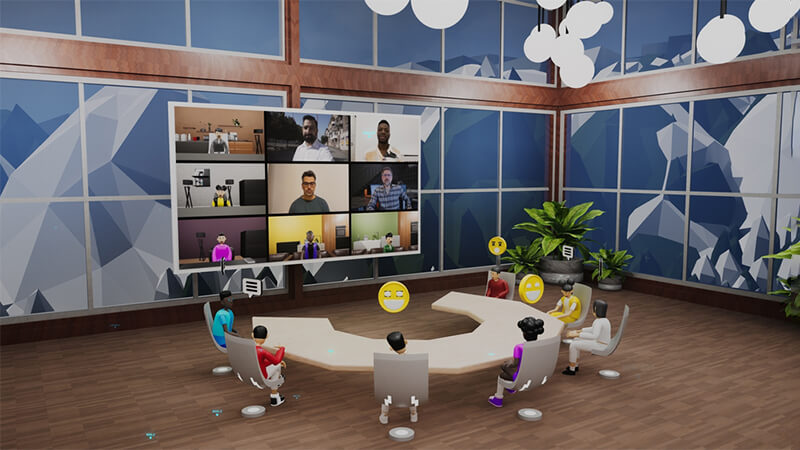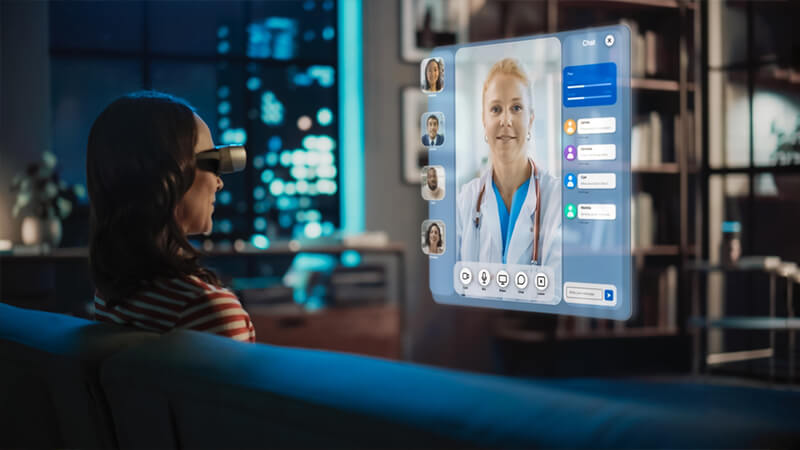In the age of digital transformation, the event industry is embracing innovative technologies to reimagine the way we plan and experience gatherings. Augmented Reality (AR) and Virtual Reality (VR) have emerged as game-changers in event planning, offering exciting opportunities to create immersive, interactive, and engaging experiences for attendees. Whether it’s virtual conferences, trade shows, or social events, AR/VR is unlocking the potential for seamless and dynamic events. Let’s explore how these transformative technologies are reshaping event planning:
1. Immersive Virtual Conferences:
Virtual Meeting Spaces: AR/VR enables the creation of lifelike virtual environments where participants can interact, network, and attend sessions in a realistic conference setting. These immersive spaces foster a sense of presence, making virtual conferences feel more engaging and personal.
Enhanced Engagement: AR/VR features such as interactive booths, virtual exhibition halls, and 3D product showcases offer dynamic ways for attendees to connect with exhibitors and sponsors, enhancing engagement and driving meaningful interactions.
2. Global Accessibility:
Breaking Barriers: AR/VR eliminates geographical constraints, making events accessible to participants from around the world. Virtual conferences transcend borders, allowing global audiences to connect and share knowledge regardless of their physical location.
Reduced Travel Costs: Virtual events significantly reduce travel expenses for both organizers and attendees, making it a cost-effective and eco-friendly option for event planning.
3. Immersive Brand Experiences:
Brand Activation: AR/VR technologies enable brands to create captivating and immersive experiences, leaving a lasting impact on attendees. Interactive product demos, virtual tours, and brand storytelling take brand engagement to a whole new level.
Shareable Moments: Memorable AR/VR experiences encourage attendees to share their virtual adventures on social media, generating organic publicity and extending the event’s reach beyond the attendees.
4. Personalized Event Experiences:
Tailored Content: AR/VR allows for customized event experiences based on attendees’ interests and preferences. Participants can choose sessions, topics, and interactive elements that cater to their specific needs.
Virtual Networking: AR/VR networking features match attendees with like-minded individuals or potential business partners, facilitating meaningful connections in the virtual landscape.
5. Event Training and Simulations:
Training Programs: AR/VR is a powerful tool for event organizers to conduct training sessions and simulations for event staff and volunteers. This immersive training improves preparedness and enhances event execution.
Event Previews: Virtual walkthroughs and simulations enable organizers to visualize event setups, identify potential challenges, and make informed decisions before the actual event.
6. Analytics and Insights:
Data-Driven Decision Making: AR/VR event platforms offer valuable data and insights on attendee engagement, behavior, and preferences. This data empowers event organizers to optimize future events for better participant experiences.
AR/VR is shaping the future of event planning, opening doors to new possibilities in creativity, accessibility, and engagement. As the technology continues to evolve, we can expect even more innovative applications that enhance the event landscape. The potential of AR/VR in event planning and virtual conferences is limitless, and its integration will undoubtedly pave the way for memorable, dynamic, and boundary-pushing events in the years to come.



